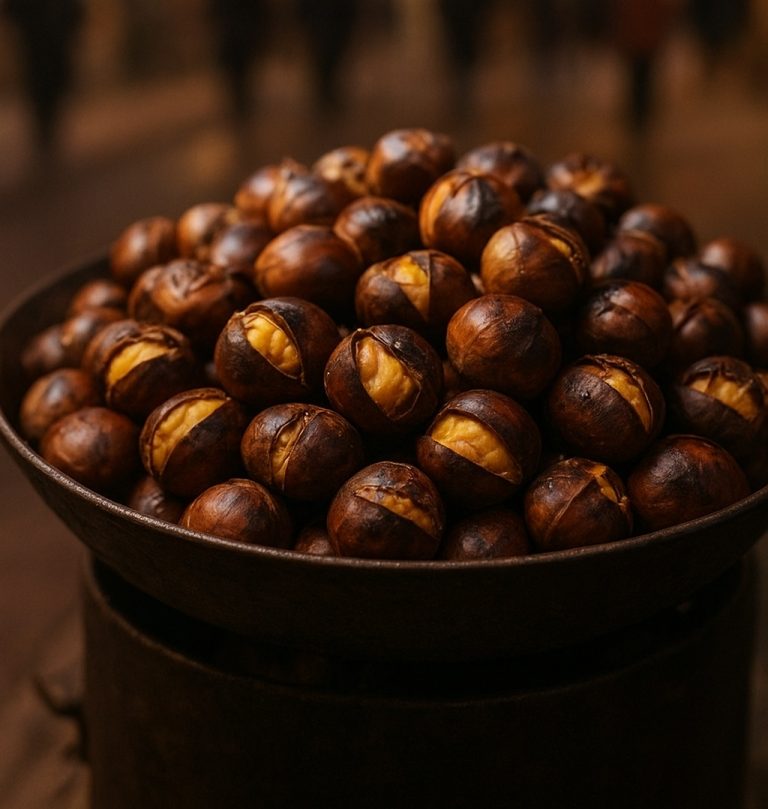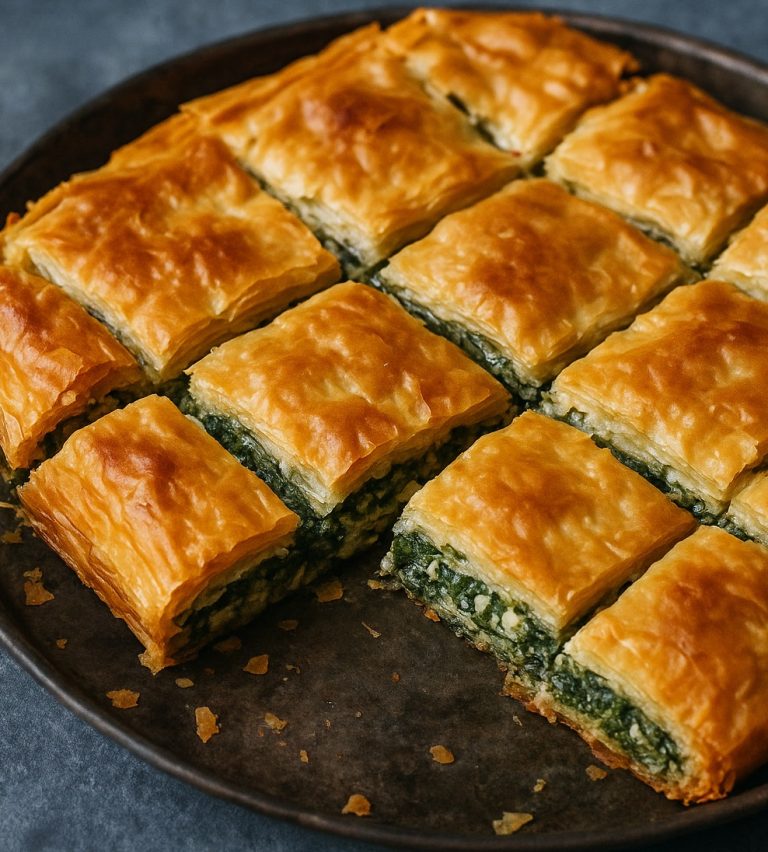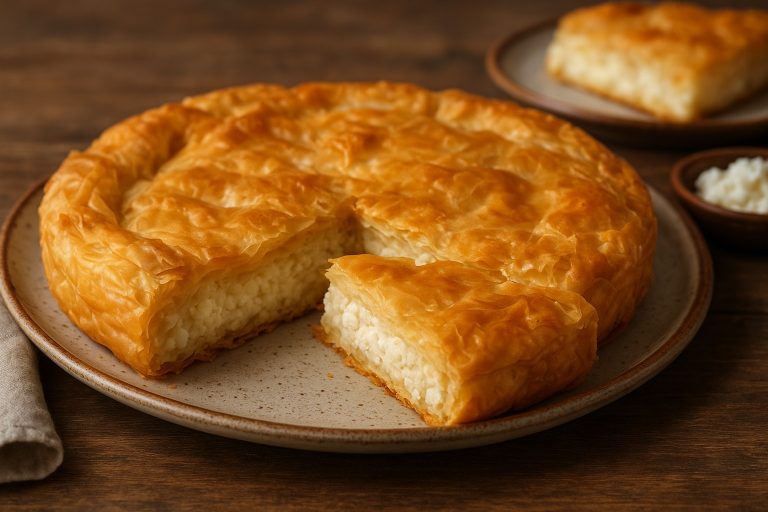
Greek cuisine is celebrated for its rich flavors and diverse ingredients, and fruit-stuffed pastries are a delightful reflection of this culinary heritage. Known for their flaky textures and luscious fillings, these pastries are a staple in Greek households and a favorite at festivals and celebrations. Let’s dive into the world of Greek fruit-stuffed pastries, exploring their history, popular varieties, and how to make them at home.
The Cultural Significance of Greek Pastries
Pastries hold a special place in Greek culture, often associated with family gatherings and festive occasions. They embody the warmth of Greek hospitality and the joy of sharing delicious food. Fruit-stuffed pastries can be found in various forms, from sweet to savory, and are often made with seasonal fruits, showcasing the bounty of the Mediterranean.
In Greece, the preparation of these pastries often involves family traditions passed down through generations. Recipes are frequently adapted to include local ingredients, giving each family’s version a unique touch. These pastries are not just food; they represent a connection to heritage, community, and the celebration of life’s special moments.
Popular Types of Greek Fruit-Stuffed Pastries
1. Bougatsa
Bougatsa is a beloved Greek pastry that can be filled with sweet or savory fillings. The sweet version typically features a luscious custard or fruit filling, such as apples or cherries, wrapped in layers of flaky phyllo dough. It’s often dusted with powdered sugar and cinnamon before serving, making it a visually appealing and delicious treat. Bougatsa is commonly enjoyed for breakfast with coffee or as a snack throughout the day.
2. Kataifi
While traditionally known for its shredded pastry, kataifi can also be filled with fruits like nuts and syrup or even fresh fruits. The pastry is baked until golden and then soaked in a sweet syrup, creating a delightful contrast between the crunchy exterior and the fruity filling. This dessert is popular during holidays and special occasions, showcasing the versatility of Greek pastry-making.
3. Tiropita (Cheese Pie) with Fruit
Though typically filled with cheese, some variations of tiropita incorporate fruit, such as figs or raisins, adding a sweet twist to the savory dish. The phyllo dough creates a crispy exterior, while the filling remains soft and flavorful. This pastry is perfect for brunch or served as an appetizer, blending sweet and savory elements in a single bite.
4. Galaktoboureko with Fruit
Galaktoboureko is a custard-filled pastry made with phyllo dough that can also feature fruit like orange or lemon zest for added flavor. The sweet syrup drizzled over the pastry complements the fruit beautifully, making it a refreshing dessert option. This pastry is often served at celebrations and is a testament to the skill involved in making intricate Greek desserts.
5. Fruit Tart (Froutopita)
Froutopita is a classic Greek fruit tart that features a buttery crust filled with pastry cream and topped with an array of fresh fruits. This dessert is ideal for showcasing seasonal fruits and is often served at family gatherings, parties, and festive occasions. The combination of creamy filling and fresh fruit creates a harmonious balance that is both refreshing and satisfying.
Making Greek Fruit-Stuffed Pastries at Home
Creating these delicious pastries in your own kitchen can be a rewarding experience. Here’s a detailed guide on how to make a classic fruit-stuffed pastry:
Ingredients
For the Dough:
- 1 package of phyllo pastry (about 16 oz)
- 1 cup of unsalted butter (melted)
For the Fruit Filling:
- 2 cups of fresh fruit (apples, cherries, or any seasonal fruit)
- 1/4 cup of sugar (adjust based on fruit sweetness)
- 1 tablespoon of cornstarch
- 1 teaspoon of cinnamon
- 1 tablespoon of lemon juice
- 1/4 cup of chopped nuts (optional)
For the Syrup:
- 1 cup of sugar
- 1 cup of water
- 1 tablespoon of lemon juice
- 1 teaspoon of vanilla extract
Instructions
- Prepare the Filling:
- Start by washing and preparing your fruit. For apples, peel and chop them into small pieces. For cherries, pit and halve them.
- In a saucepan, combine the fruit, sugar, cornstarch, cinnamon, and lemon juice.
- Cook over medium heat for about 5-7 minutes until the fruit softens and the mixture thickens. Stir occasionally to prevent sticking. Once done, allow it to cool.
- Prepare the Phyllo Dough:
- Preheat the oven to 375°F (190°C).
- Carefully unroll the phyllo dough and cover it with a damp cloth to prevent it from drying out.
- Take one sheet of phyllo, brush it with melted butter, and layer another sheet on top. Repeat this process for about 5-6 sheets, ensuring each layer is well-buttered for optimal flakiness.
- Assemble the Pastries:
- Place a generous spoonful of the fruit filling at one end of the layered phyllo. If using, sprinkle some chopped nuts on top of the filling for added texture and flavor.
- Fold the sides over the filling and roll it up tightly, like a strudel or cigar.
- Place the rolled pastry on a baking sheet lined with parchment paper. Repeat with the remaining dough and filling.
- Bake:
- Brush the tops of the pastries with more melted butter for a beautiful golden finish.
- Bake for 25-30 minutes or until golden brown and crispy.
- Prepare the Syrup:
- In a saucepan, combine sugar, water, lemon juice, and vanilla extract. Bring to a boil, then simmer for about 10 minutes until slightly thickened.
- Remove from heat and let cool slightly.
- Finish the Pastries:
- Once the pastries are baked, immediately pour the warm syrup over them, allowing it to soak in. This step is crucial for adding moisture and sweetness to the pastries.
- Let them cool for a few minutes before serving. Dust with powdered sugar or cinnamon for an elegant touch.
Tips for Success
- Phyllo Handling: Phyllo dough can dry out quickly, so keep it covered with a damp cloth while you work. If it tears, you can layer it to maintain the pastry’s structure.
- Fruit Selection: Use a mix of fruits for a more complex flavor profile. Seasonal fruits often yield the best results.
- Flavor Variations: Experiment with spices like nutmeg or cardamom in the filling for a unique twist. You can also add a splash of liqueur, such as ouzo or brandy, for an adult version.
Serving Suggestions
Greek fruit-stuffed pastries are best enjoyed fresh and warm. They can be served as a dessert, as part of a brunch spread, or even as a sweet snack with coffee or tea. For an authentic Greek experience, pair them with a side of Greek yogurt drizzled with honey, or serve with a scoop of vanilla ice cream.
Conclusion
Greek fruit-stuffed pastries are a delicious way to experience the flavors of Greece. With their flaky textures and sweet fillings, they capture the essence of Greek hospitality and tradition. Whether enjoyed during a festive celebration or as a sweet treat any day of the week, these pastries are sure to delight.
Making them at home can be a fun and satisfying experience, allowing you to share a piece of Greek culture with family and friends. So, roll up your sleeves and get baking—deliciousness awaits in every flaky, fruit-filled bite.



